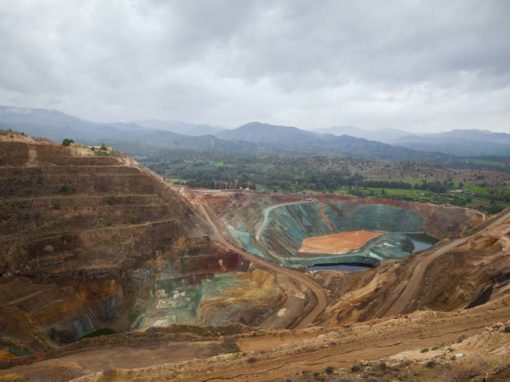Pillow lavas (Koronia)
These are the igneous rocks that cover the Adelphi forest area, the forest that geologically belongs to the known Troodos ophiolithic system that formed in the Upper Cretaceous about 90 million years ago.
These rocks are volcanic rocks of diabase veins with thin bands of pillow lavas covering the lower altitudes, the northeastern and eastern boundaries of the Adelphi Forest from Asinou to ‘Kako Anemo’, Saint George Kafkallou, Xiliatos to Agios Epiphanios.
These are characteristic spherical to ellipsoidal forms of handles, as a result of the pressure of the sea water during the discharge and spreading. The ‘cushions’ of these handles can have a diametre of 30 to 70 cm. Their periphery is glassy because of rapid cooling and internally cellular due to the gaps created by the sudden escape of gases present in the lava (> 1000 ° C) lava .
On the described ophiolithic rocks, and especially on the ‘pillow’ lava, the first dark / brown precipitates of a few metres thickness and the horizontal spread of a few tens of metres, known dirt or umbras, are found. These deposits are rich in iron oxides (Fe) and manganese (Mn) and are similar to the iron-rich sediments found on the slopes of the mid-ocean ridges of the present oceans. Their origin is due to submerged hot solutions, rich in Fe and Mn, which have been laid on the seabed.
Location
Geology
Amiantos (Asbestos) Mine
In addition to copper, the metal that Cyprus has long been famous for (and named after), another mineral has make its mark in the history of the island. Asbestos. Since antiquity, especially since Roman and Classical times, Cyprus has been known for th
Lake at the Asbestos mine
In a rough and forbidden area in Troodos, near the asbestos mines and after crossing the path from the camp area, one will encounter the lake of Almyrolivados. The route presents difficulties with abrupt changes in landscape morphology and steep climbs
Skouriotissa Mines
The mining history of Cyprus has linked its name (Cyprus) to copper (Cuprous). Copper production in Cyprus began before 3000 BC. and vertically integrated. The exploitation of the copper ore of Skouriotissa is lost in the depths of the centuries, possi
Sulphur Springs
The Sulphur Springs of Kalopanayiotis are located near the banks of the river Setrachos, next to the Venetian bridge. The healing properties of its sulphur-containing waters have been known since antiquity. In fact, at the monastery of Agios Ioannis La
Troodos Geopark
In 2015, the Troodos mountain range was selected by UNESCO and proclaimed a Geopark, due to the due to its unique geological heritage, which is derived from the particular genesis and elevation of the mountain range. The Troodos Geopark is located in t














